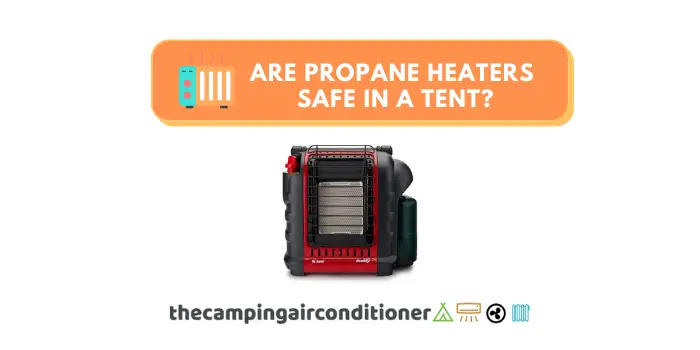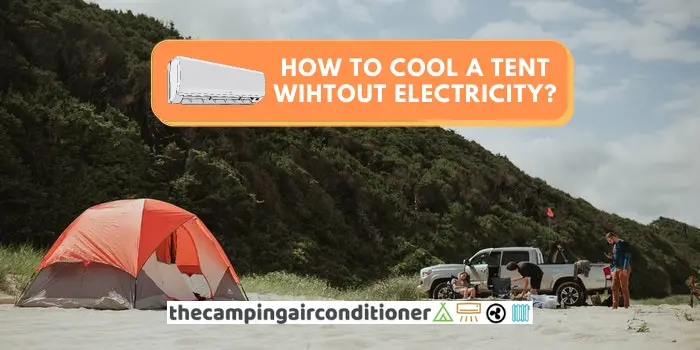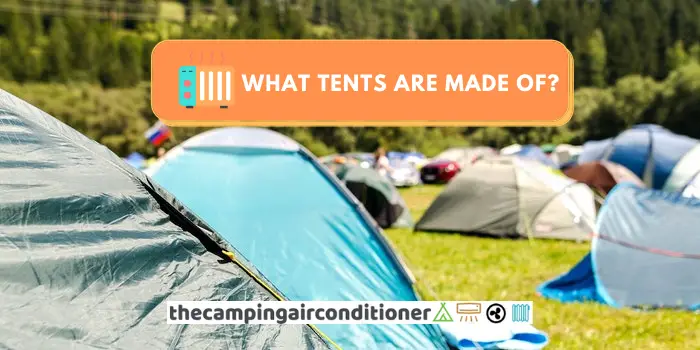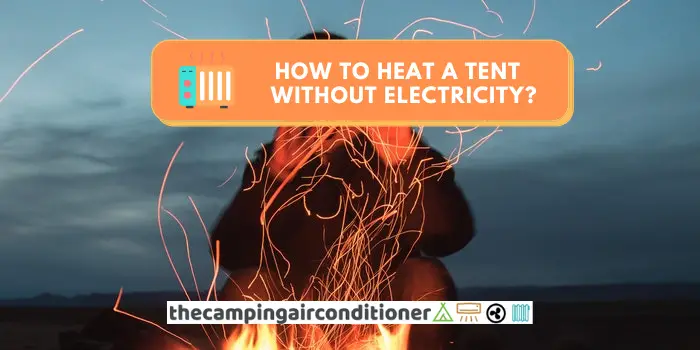If you are camping in winter and want to improve your tent’s insulation, using a tent insulation liner might be excellent. It will help you control both temperature and humidity levels and help you tackle freezing nights.
A tent insulation liner will create a physical barrier to protect heat transfer from inside your shelter to the cold outside environment.
They are typically built with an insulation material (i.e. thick quilted polyester) covered with a reflective layer, which helps to insulate further.
Combined with a tent heater, they can keep you warm and cozy during freezing nights.
Let’s go through some options below for hammock camping, tents, and rooftop car tents.
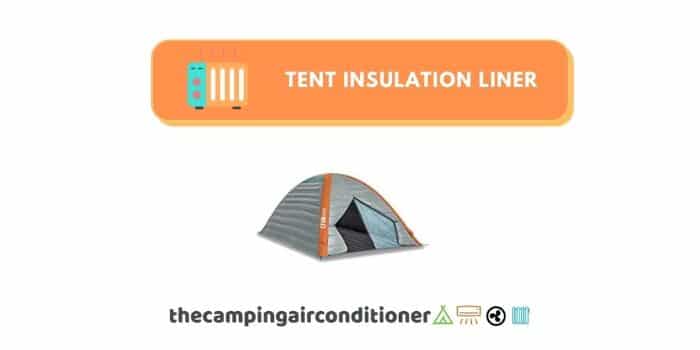
By the way, The Camping Air Conditioner is sponsored by readers. When you buy through one of our links, we may earn an affiliate commission at no extra cost to you.
Tent insulation liner - what are your options?
Different camping conditions will require different insulation approaches. This article will discuss easy tips to help you with hammock, tent, and rooftop car tent camping.
Insulation liner for hammocks
The benefits of hammock camping are numerous, such as:
- Easy setup;
- Versatility
- Lightweight and minimal baggage
- Affordability (hammocks are cheaper than tents)
However, some challenges arise when it comes to winter camping. With thin material, hammocks can get very cold, and because they are suspended, they can have significant exposure to wind and air circulation, which can become a camping hurdle.
To mitigate this problem, you can use a tent tarp, use a hot water bottle to pre-heat your hammock and wear thermal clothes/
However, the most efficient way to insulate and warm yourself up will be a hammock insulation liner. OneTigris manufactures an affordable and efficient option for hammocks.
The OneTrigis hammock underquilt is made of 210T terylene shell, 300T polyester pongee lining, and 700g of polyester-cotton, which ensures a soft, lightweight, and efficient insulation material.
This model comes with elastic straps that make your life easier during installation. It only weighs 890 grams and is foldable, being ideal for hammock camping.
According to the manufacturer, it is suitable for temperatures ranging from 41F to 68F (5 Celsius to 20 Celsius).
Insulation Liner for tents (DIY)
Tents have different sizes and shapes, which create a challenge to manufacture insulation liners for each tent. The secret here is a DIY approach.
The idea is to create an efficient insulation barrier that will effectively trap warm air inside our tent and avoid that cold air going into our shelter. But how do you do it?
Simple, get a thick insulation shield that will create a thermal barrier and fix it with duct tape and small pegs.
SmartShied is a good option – it comes in a roll with 5mm of thickness and has different size options (from 16 x 50ft to 48” x 50ft). The roles are made with closed-cell polyethylene FOAM sandwiched between aluminium on both sides.
Further, we like Smartshield because it also acts as a vapour barrier (decreasing condensation risks) and as a sound barrier, making your nights better.
To increase the temperature of your tent, you might leave your tent heater for one hour inside your insulated tent before going to bed.
It will help increase temperature, and the insulation will trap the warm air inside. If you are using a propane heater, pay attention to Carbon monoxide levels – we recommend leaving a small opening to facilitate air circulation and never leaving the heater completely unattended.
If you have a power connection around your tent, go with an electric heater – they are the safest option!
If you have any doubts about using a heater inside your tent, read this article.
Crua Outdoors Culla - The best insulation liner for small tents
Crua Outdoors Culla Maxx 3 Person is a special insulation liner ideal for small tents. It fits a wide range of models and has airframe beams that allow almost instant set up – 60 seconds.
Made of breathable polyester, Crua Outdoors Culla Maxx was created to be used as an inner tent. It provides optimal temperature control and has blackout features, translating into a relaxing and enjoyable sleeping night!
The polyester makes it lightweight (weighing only 7.5kg) and easy to fold and transport. As for dimensions, it measures 193 x 203 x 122 (WXLXH), being ideal for small-to-mid dome-shaped tents.
Insulation liners for rooftop tents
If you are a rooftop camping lover, don’t worry. There are also great options available for you in the market.
Tepui Insulator is specially manufactured to address your winter days’ problems! This insulation liner was made for kukenam tents and autana models. However, you can quickly adapt it to your tent.
Only weighing 1kg, this model offers excellent insulation features and block the sunlight well (good blackout to ensure a calm night!). It might be good to complement it with a warm sleeping bag in extremely cold weather.
FAQ
What is the cost of a insulation liner?
Costs can rage from $50 (DIY approach) to $600 (Crua Outdoors Culla Maxx)
Is it safe to put a tent heater inside my tent?
Yes, there are no problems if you stick to some safety measures, such as monitoring CO levels (for gas and liquid heaters) and ensuring proper ventilation.
How can I heat my tent without electricity??
We wrote an article with detailed tips on how to heat your tent without electricity. Practical measures include:
- Choose the appropriate tent material
- Pitch your tent at the right spot
- Use warm blankets
- Bring the adequate sleeping bags
- Intake enough calories
- Use a hot water bottle.
- Try light exercise before going to bed
- Drink hot beverages
- Use a portable heater.
Click here to read our article.
Conclusion
Tent insulation liners are an excellent alternative to keep you warm while camping.
There are alternatives for all camping approaches, including hammock, tent, and rooftop car camping.
All recommendations are:
- OneTrigis hammock underquilt – For hammock camping
- SmartShied – for a DIY tent approach
- Crua Outdoors Culla Maxx – for small tents.
- Tepui Insulator – for rooftop car camping.
Have a warm and cozy camping trip!





